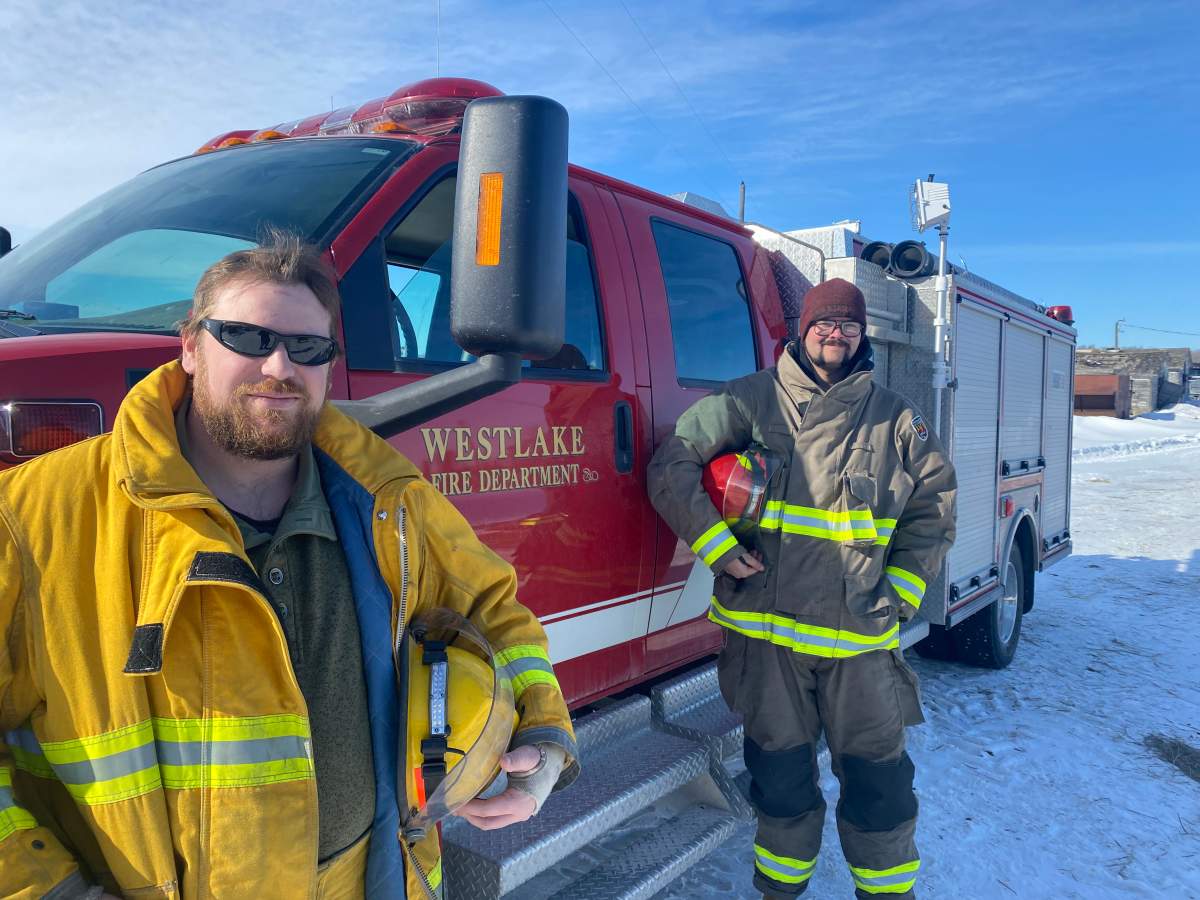In an emergency, the number is 911. But what happens when your call doesn’t patch through?

For 1,400 people in Eddystone, Man., located in the Rural Municipality of Alonsa, that’s a problem they live with in the midst of unpredictable cell and internet service.
“For cellphone coverage, you can be in one spot one day and it’ll work fine, like with an LTE network,” says Ian Kotelko, a volunteer firefighter at Westlake Fire Department. “The next day, you’ll be standing in the same spot and it’ll be struggling to find the same signal.”
Not only is it frustrating, he says, but it’s also dangerous.
“If your vehicle isn’t hooked up to, say, OnStar or some kind of service like that where you get into a large impact or accident, or you can push that button and it goes up to a satellite, then basically it’s a 50-50 chance. You’re either going to get a call out, or you’re just going to sit there and wait till someone drives by.”
Even if a call manages to squeeze out, it might not go to the right place. Kotelko says sometimes, calls are dispatched to Toronto.

Get daily National news
“If you know it went to Toronto, you can ask right off the bat if you called Toronto or Brandon, Man. If they say Toronto, you can ask to be transferred to Brandon,” he says, adding that people in Brandon will at least have familiarity with the area and dispatch the right crews.
“When you come into our RM from the Lake Manitoba Narrows bridge, it says, ‘RM of Alonsa, Emergency services, call 911.’ I don’t even know why that sign is on there. It should be, ‘Call 911 if you have a chance,’” Kotelko says.
According to experts, only 46 per cent of rural Canadians and 26 per cent of First Nations communities have access to reliable internet and mobile coverage, compared with 99 per cent of Canadians living in cities.
David Gerhard, head of the computer science department at the University of Manitoba, explains that the cost of the infrastructure in remote areas is high and won’t give companies the return on investment they want.
“A tower might get very few connections, so the differential cost between installing the tower and the service that tower provides makes it very expensive to add new towers in remote areas, ” Gerhard says.
For that reason, Joel Templeman, executive director of the Internet Society, Manitoba Chapter, says the market model should be completely replaced in those remote areas by a community network model, operated by locals. This, he says, would enable more equitable access.
“Communities themselves can adapt the technology that works in their area, depending on the geography, or their infrastructure, what they can handle, what capacity they have to manage it,” Templeman says. “And to be able to build local teams to support it.”
Templeman says this model comes with opportunities for local economic development, but change is going to require major political pressure from people living in these communities.
Lisa Naylor, minister of consumer protection and government services, says in a statement that she met with municipalities in the fall to discuss this issue, and the provincial government is committed to “helping support them to provide the services families and communities rely on.”















Comments